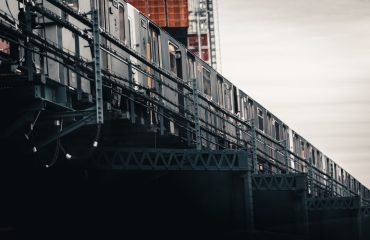body {
font-family: sans-serif;
line-height: 1.6;
}
h1, h2, h3 {
color: #333;
}
img {
max-width: 100%;
height: auto;
display: block;
margin: 20px auto;
}
Power plants, the behemoths of energy production, rely on a complex interplay of systems and components to function efficiently and safely. While turbines, generators, and boilers often take center stage, a crucial yet often overlooked element is the extensive use of steel profiles. These seemingly simple shapes – beams, channels, angles, and more – form the backbone of power plant infrastructure, contributing significantly to its structural integrity, operational efficiency, and longevity. This post delves into the vital role of steel profiles in these critical facilities.
Structural Support: The Foundation of Power Plant Stability
Steel profiles are the cornerstone of a power plant’s structural framework. From the massive support structures for boilers and turbines to the intricate scaffolding used during construction and maintenance, steel’s high strength-to-weight ratio makes it an ideal material. Heavy-duty I-beams and H-beams provide the necessary strength to bear the immense weight of equipment, while lighter sections, such as channels and angles, are used for bracing and secondary support systems. The design and selection of these profiles are meticulously calculated to withstand seismic activity, wind loads, and other environmental factors, ensuring the plant’s stability and safety under various conditions. The use of advanced steel alloys, such as high-strength low-alloy (HSLA) steel, further enhances the structural capacity and reduces the overall weight of the structure.
Containment and Safety: Protecting Against High Pressures and Temperatures
Power plants operate under extreme conditions, involving high pressures, temperatures, and potentially hazardous materials. Steel profiles play a critical role in containment structures, ensuring the safe operation of the plant. For instance, in nuclear power plants, specialized steel profiles are used in the construction of containment vessels, designed to withstand immense internal pressures and prevent the release of radioactive materials in case of an accident. Similarly, in fossil fuel power plants, robust steel structures are essential for containing boilers, turbines, and other high-pressure components. The selection of appropriate steel grades, considering factors like corrosion resistance and high-temperature strength, is paramount for ensuring long-term safety and reliability.
Material Selection: Choosing the Right Steel for the Job
The choice of steel profile is far from arbitrary. Engineers carefully consider a variety of factors, including the specific application, environmental conditions, and required strength and durability. Carbon steel is a common choice due to its cost-effectiveness and adequate strength for many applications. However, in environments with high corrosion risks, such as coastal locations or areas with high humidity, stainless steel profiles offer superior resistance to rust and degradation. For high-temperature applications, such as boiler components, heat-resistant steel alloys are essential to maintain structural integrity and prevent failure. The selection process involves detailed material testing and analysis to ensure compliance with stringent safety and performance standards.
Manufacturing and Fabrication: Precision Engineering for Power Plant Needs
The manufacturing and fabrication of steel profiles for power plants demand high precision and quality control. These profiles are often produced to exacting specifications, with tight tolerances to ensure proper fit and function within the complex systems of a power plant. Advanced manufacturing techniques, such as laser cutting, robotic welding, and automated assembly, are employed to achieve the required accuracy and efficiency. Quality control measures throughout the manufacturing process are crucial, including regular inspections, material testing, and non-destructive testing (NDT) methods, such as ultrasonic testing and radiographic inspection, to identify and rectify any defects before installation.
Maintenance and Longevity: Ensuring Long-Term Operational Efficiency
Regular maintenance and inspection of steel profiles are vital for ensuring the long-term operational efficiency and safety of a power plant. Corrosion protection measures, such as painting, galvanizing, or applying specialized coatings, are implemented to extend the lifespan of the steel structures. Regular inspections help identify potential issues, such as corrosion, fatigue, or damage, allowing for timely repairs or replacements to prevent major failures. Proper maintenance practices not only ensure the safety and reliability of the power plant but also contribute to its overall cost-effectiveness by minimizing downtime and prolonging the lifespan of its critical components.
In conclusion, steel profiles are indispensable components within the complex architecture of power plants. Their selection, manufacturing, and maintenance are crucial for ensuring the safety, efficiency, and longevity of these vital energy production facilities. Understanding the specific roles and considerations surrounding their use is essential for the design, construction, and operation of modern power plants.
SEO Tags:
- Steel profiles
- Power plant construction
- Steel structures
- Industrial steel
- Power plant engineering




